We have a Cosmos graph database like below. ie. A,B,C,... are nodes/vertices and edges are as shown by the arrows.
Each node/vertex represents a value in SQL table. Process and the requirement are as follows.
- User modifies node A value in SQL table
- Gremlin query passes A into the Graph
- Graph returns the following vertices in the below listed order
- C# app calculates the values of D,K,M,P nodes in the order and updates SQL table
- D = A+B+C
- K = F+E+D
- M = J+K
- P = L+M+N+O
I tried the following query and it has over 3000 RUs which is very costly.
g.V("A").emit().repeat(__.in('depends')).until(__.inE().count().is(0))
We need some help to optimise the query. thanks
UPDATE ===========
OK, we can rebuild the graph in a single partition to reduce the RUs but we have a scenario where multiple nodes are affected, highlighted in red in the below picture, on the way up starting from A.
Can someone help with a query to get the results in A, D, K, O, M, P order please? Logic to the query is all the child nodes should be listed before their parents
g.addV('ddn').property('pk', 'pk').property(id, 'A').property('formula', 'A').
addV('ddn').property('pk', 'pk').property(id, 'B').property('formula', 'B').
addV('ddn').property('pk', 'pk').property(id, 'C').property('formula', 'C').
addV('ddn').property('pk', 'pk').property(id, 'D').property('formula', 'A+B+C').property('requires', "'A','B','C'").
addV('ddn').property('pk', 'pk').property(id, 'E').property('formula', 'E').
addV('ddn').property('pk', 'pk').property(id, 'F').property('formula', 'E').
addV('ddn').property('pk', 'pk').property(id, 'G').property('formula', 'H+I').property('requires', "'H','I'").
addV('ddn').property('pk', 'pk').property(id, 'H').property('formula', 'H').
addV('ddn').property('pk', 'pk').property(id, 'I').property('formula', 'I').
addV('ddn').property('pk', 'pk').property(id, 'J').property('formula', 'F+G').property('requires', "'F','G'").
addV('ddn').property('pk', 'pk').property(id, 'K').property('formula', 'D+E+F').property('requires', "'D','E','F'").
addV('ddn').property('pk', 'pk').property(id, 'L').property('formula', 'L').
addV('ddn').property('pk', 'pk').property(id, 'M').property('formula', 'J+K').
addV('ddn').property('pk', 'pk').property(id, 'N').property('formula', 'N').
addV('ddn').property('pk', 'pk').property(id, 'O').property('formula', 'A+K').property('requires', "'A','K'").
addV('ddn').property('pk', 'pk').property(id, 'P').property('formula', 'L+M+N+O').property('requires', "'L','M','N','O'").
V('D').addE('needs').to(V('A')).
V('D').addE('needs').to(V('B')).
V('D').addE('needs').to(V('C')).
V('G').addE('needs').to(V('H')).
V('G').addE('needs').to(V('I')).
V('K').addE('needs').to(V('D')).
V('K').addE('needs').to(V('E')).
V('K').addE('needs').to(V('F')).
V('J').addE('needs').to(V('F')).
V('J').addE('needs').to(V('G')).
V('O').addE('needs').to(V('A')).
V('O').addE('needs').to(V('K')).
V('M').addE('needs').to(V('J')).
V('M').addE('needs').to(V('K')).
V('P').addE('needs').to(V('L')).
V('P').addE('needs').to(V('M')).
V('P').addE('needs').to(V('N')).
V('P').addE('needs').to(V('O'))

